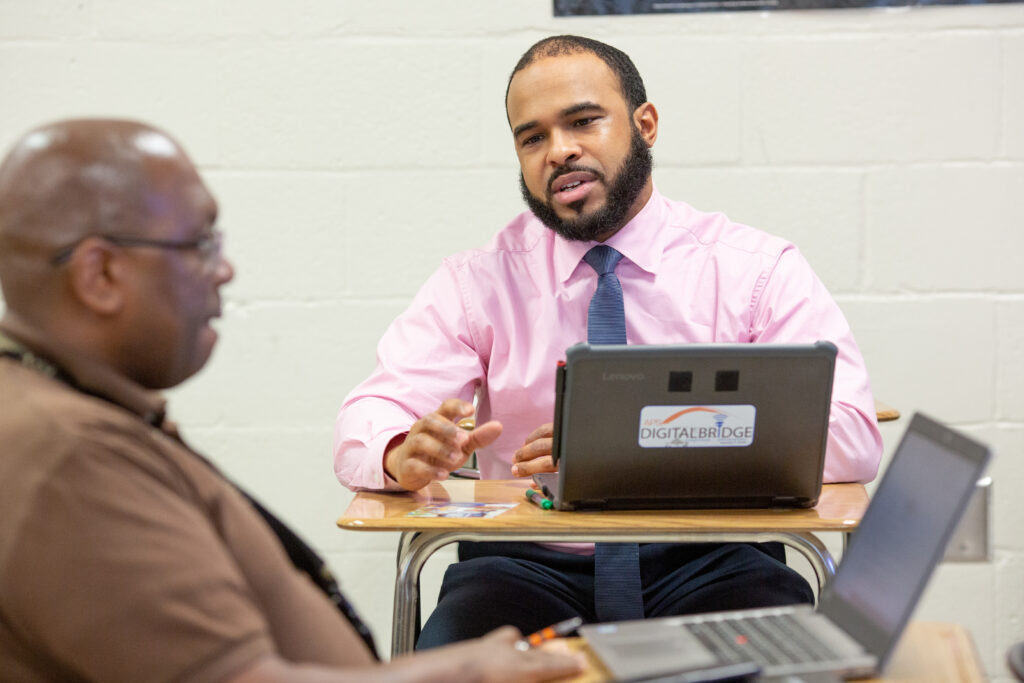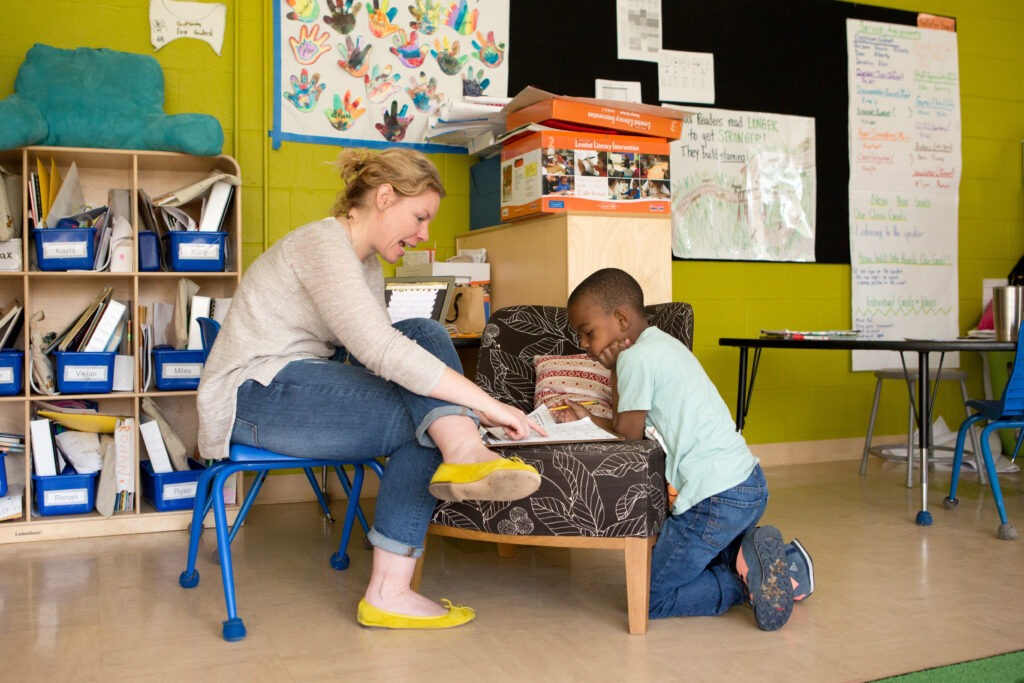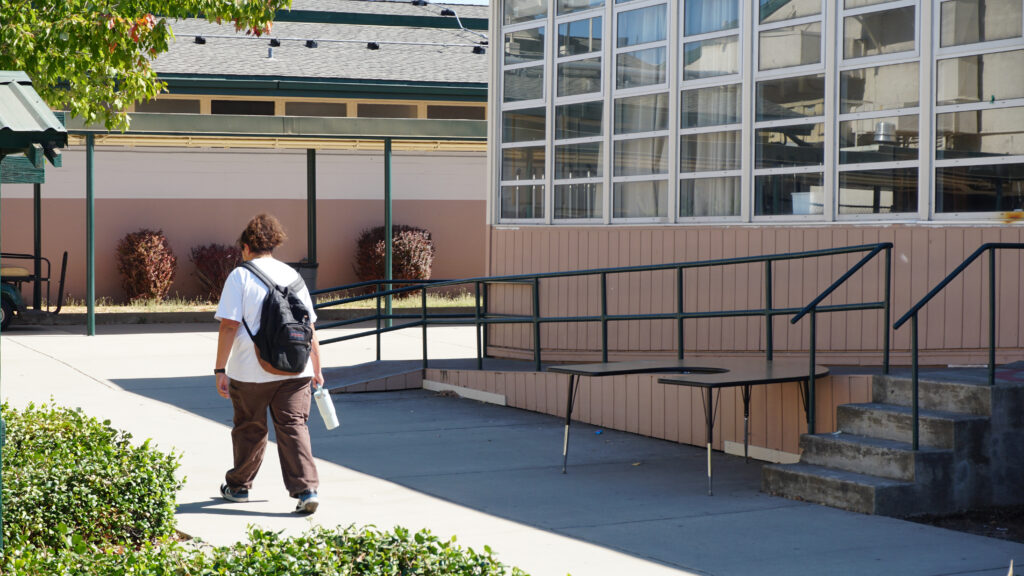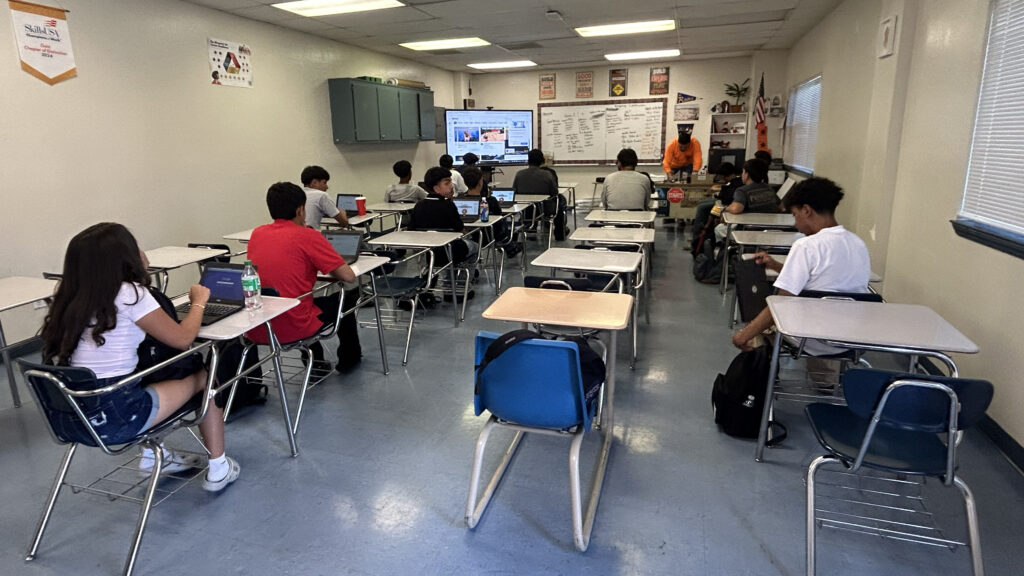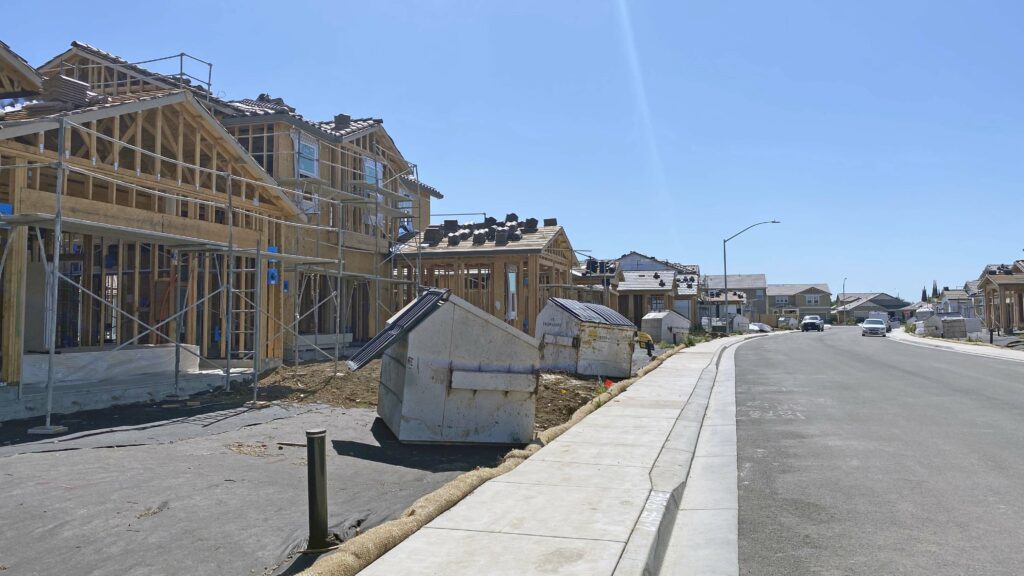
Credit: Allison Shelley for American Education
Imagine a school where the principal spends less time buried in paperwork and more time in classrooms, supporting teachers and fostering an inclusive learning environment for students with disabilities.
Embracing artificial intelligence (AI) can make this vision a reality.
AI holds the potential to revolutionize school leadership by alleviating the administrative burden on principals. Principals are essential to developing school culture and steering our schools toward more inclusive practices. Their guidance and decision-making for professional learning, promoting specific desired outcomes, and allocating budgets and resources directly impact students’ experiences.
When a school leader is passionate about creating inclusive learning environments and ensuring students have more access to the general education curriculum, little can stop them — except, of course, the ever-increasing tasks and paperwork that keep them in their offices and away from the classrooms.
Just this past year, the Association of California School Administrators (ACSA) targeted the growing number of duplicative mandates that district and school leaders are spending valuable time on as one of their platforms for Legislative Action Day. Nearly 400 education leaders came together in Sacramento this past April to demand change in a handful of areas, including streamlined accountability: calling for less time spent on writing separate plans and reports for the many (often redundant or overlapping) state and federal programs, so more time can be spent in classrooms.
Not only are principals responsible for numerous plans required by the state, they also have school site plans, emergency plans, loads of evaluations to write, newsletters to the community, emails to respond to, websites to keep up-to-date, data to review and analyze, the list goes on and on. The workload on principals has dramatically increased over the years, and we should be concerned if we want effective leadership in our schools.
In much of my work with administrators on creating more inclusive schools, I address these issues through ideas like sharing responsibilities, delegating tasks and inventorying initiatives to help streamline resources, including time; and now I’m adding a new one: Embrace AI!
New tools, including AI virtual assistants, or SchoolAI and TeachAI, can automate routine administrative tasks like scheduling, attendance tracking, data analysis, and report generation. Tools like ChatGPT, Grammarly, and Co-Pilot can summarize our notes, edit our writing, and be thought partners when our brains are fried. Just this week I have used AI tools to help with rewording and editing my writing, drafting an agenda, and creating original pictures to use in presentations without having to search the web for what I need, all in all, saving me a few hours.
And imagine what our principals could be doing with a few extra hours a week — observing classrooms, providing instructional feedback and greeting students. At the Inclusive Leadership Center at Chapman University, I work with K-12 school administrators supporting their strategic planning and providing professional development. We hear again and again that one of the biggest barriers administrators face in creating inclusive environments for students with disabilities is a lack of time — so let’s remove this barrier.
As we work on improving the quality of education for students with disabilities, leveraging technology and AI to achieve this is a no-brainer. So why not use it as a tool for administrators and not just for our students?
In addition to taking on some of the mundane tasks, AI can even assist in identifying trends and areas for improvement through data analysis, helping principals make informed decisions that support all students. Once administrators embrace AI, think of how teachers can use it. The possibilities are endless and time-saving.
Of course, there are valid concerns about artificial intelligence, such as data privacy and the fear of technology replacing human roles. We need to think about AI as a tool to enhance human capabilities, not replace them. We need proper safeguards to address privacy concerns, but solving these issues should not stop us from using AI to the advantage of our communities and students. I am not advocating for AI to take over all our school leaders’ tasks, like generating all school communication, teacher evaluations, and individualized education plans. But it can assist through editing, clarifying and summarizing through the drafting process, even helping with communicating to specific audiences and tone. Most administrators, including myself, have sent an email we later wished we could have asked AI to check first.
By embracing AI, schools can empower their leaders to spend more time fostering an inclusive, supportive and effective learning environment. It’s time for education to harness the power of AI to benefit all students.
•••
Kari Adams directs the Inclusive Leadership Center at the Thompson Policy Institute on Disability at Chapman University and leads the Coalition of Inclusive School Leaders. She previously was a public school special education administrator.
The opinions in this commentary are those of the author. We welcome guest commentaries with diverse points of view. If you would like to submit a commentary, please review our guidelines and contact us.
